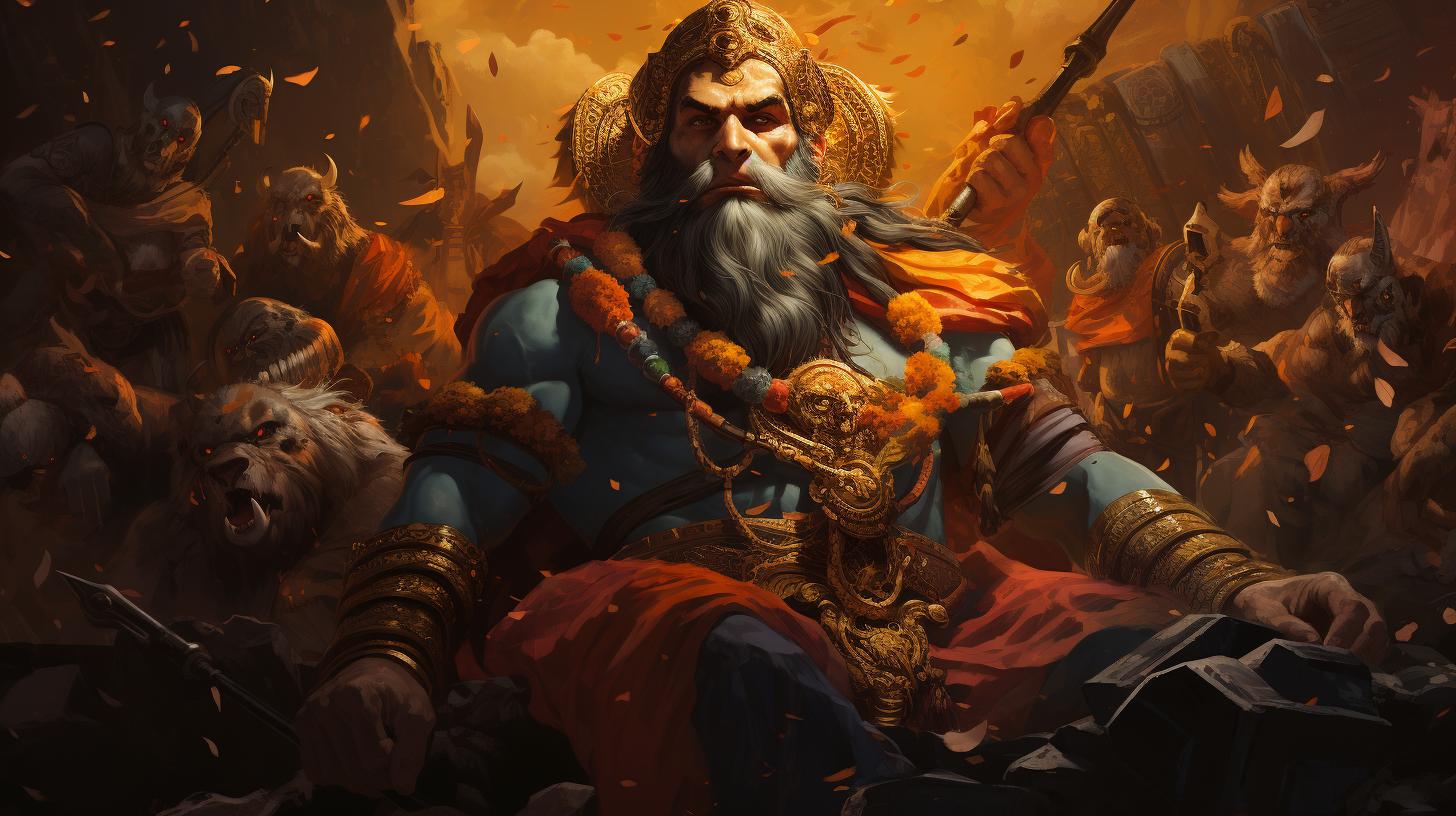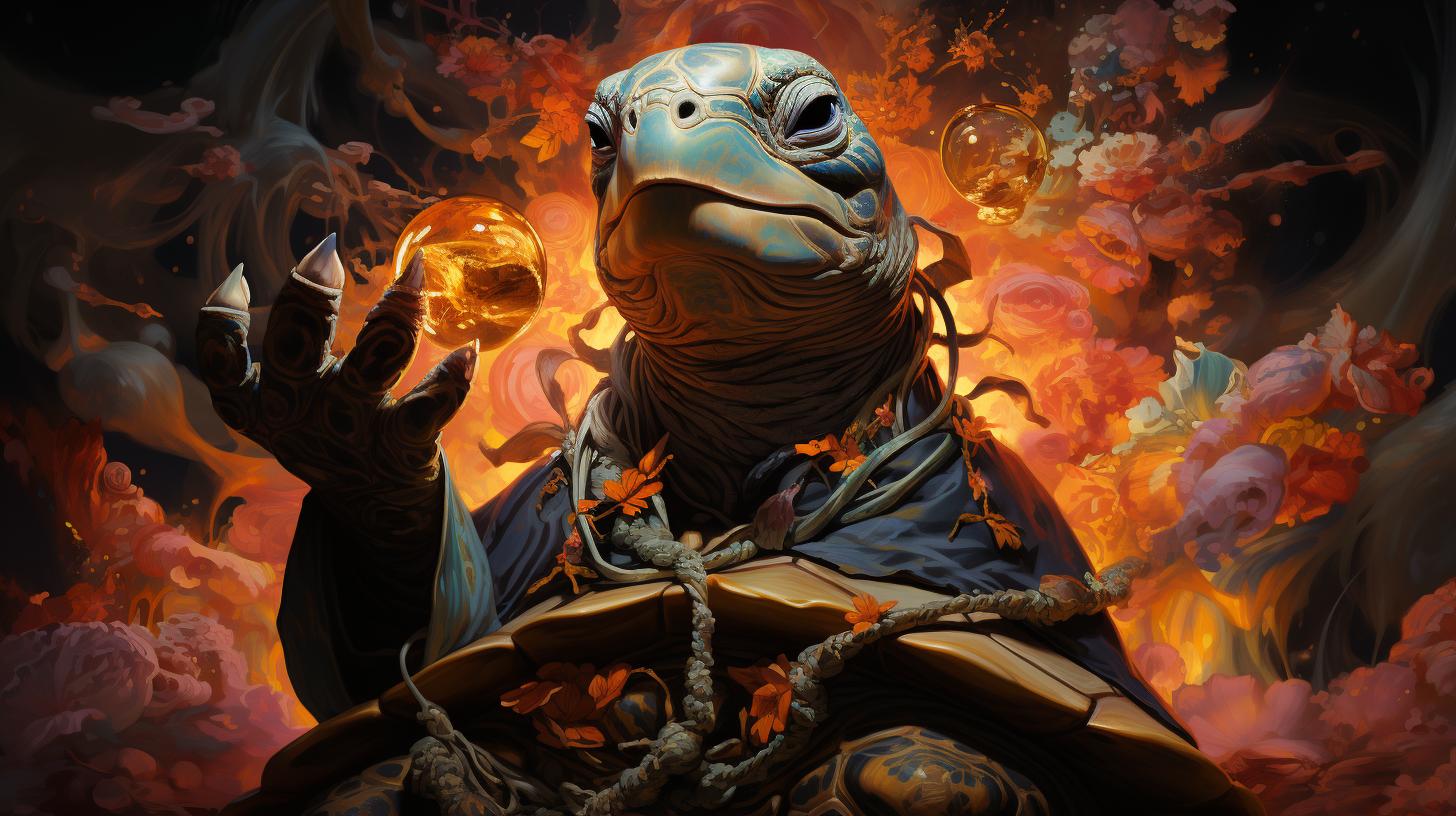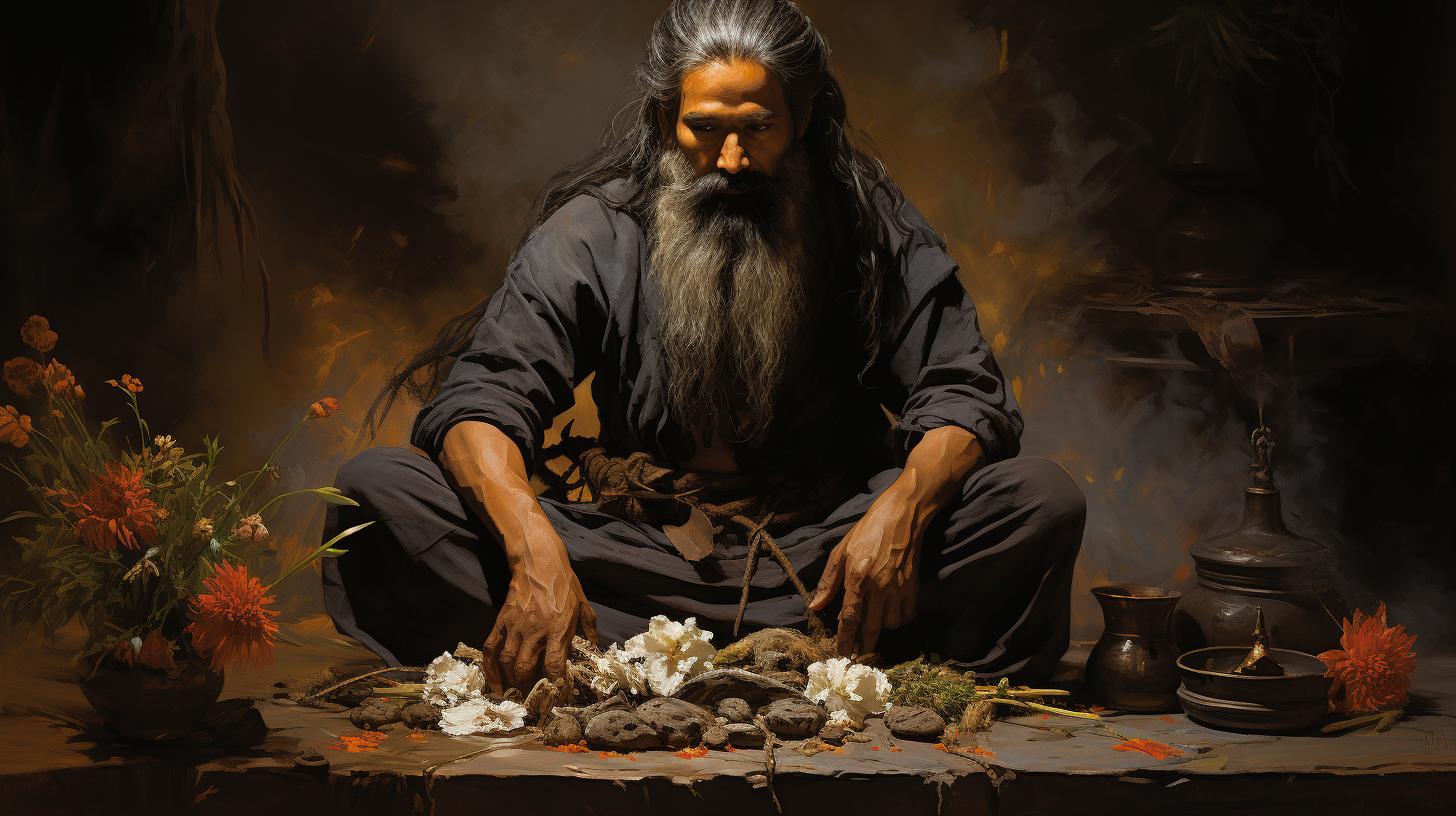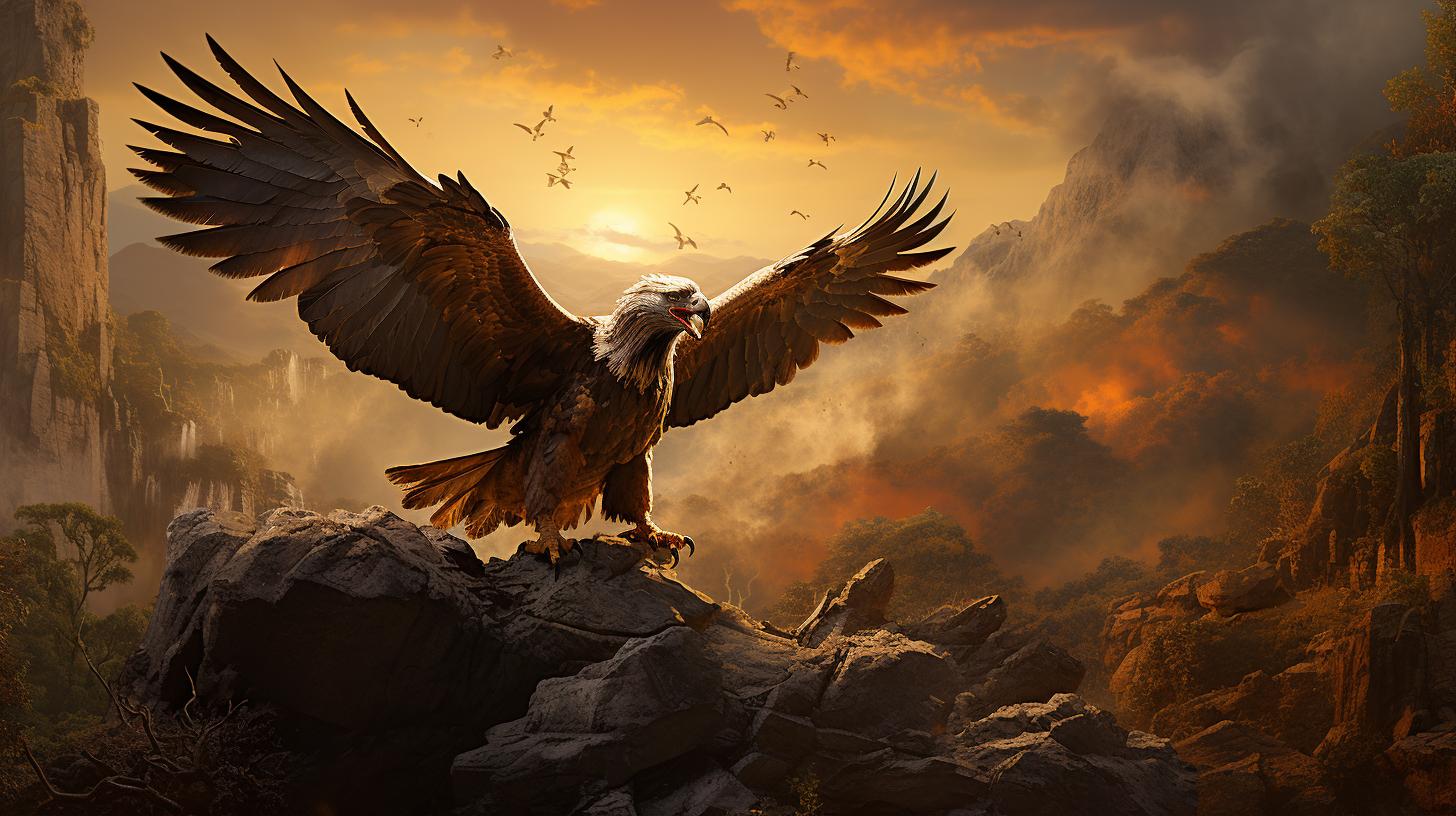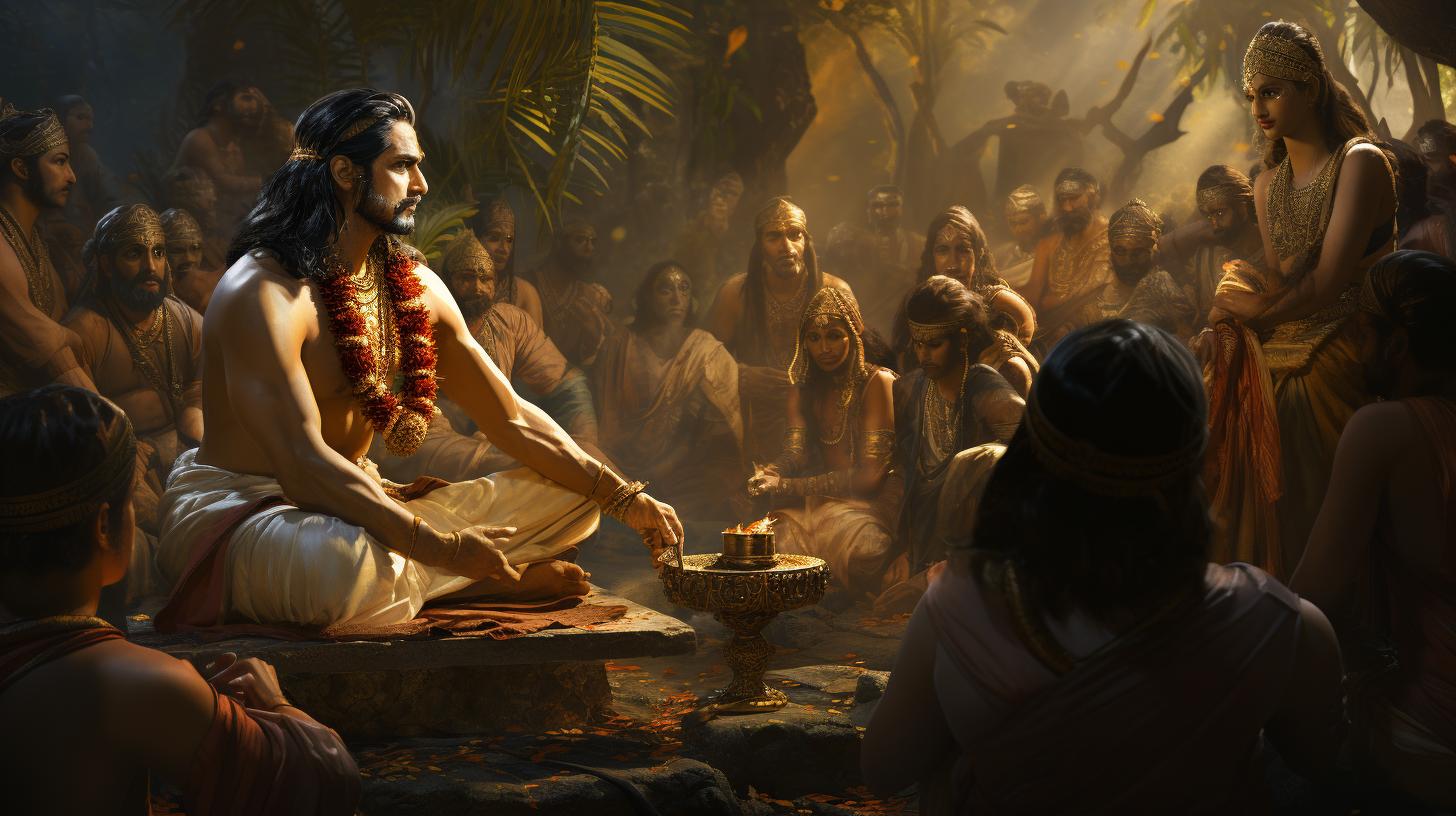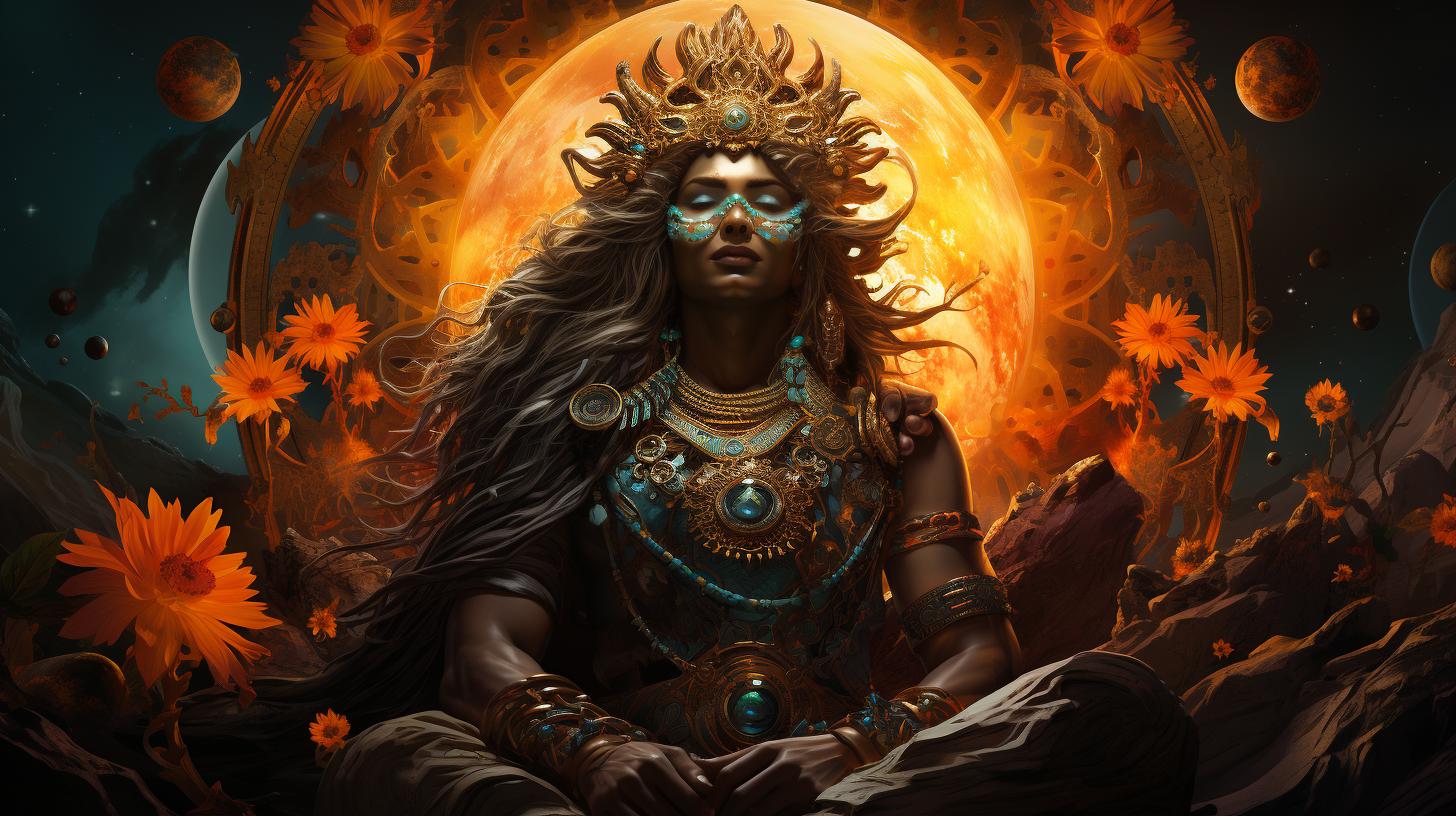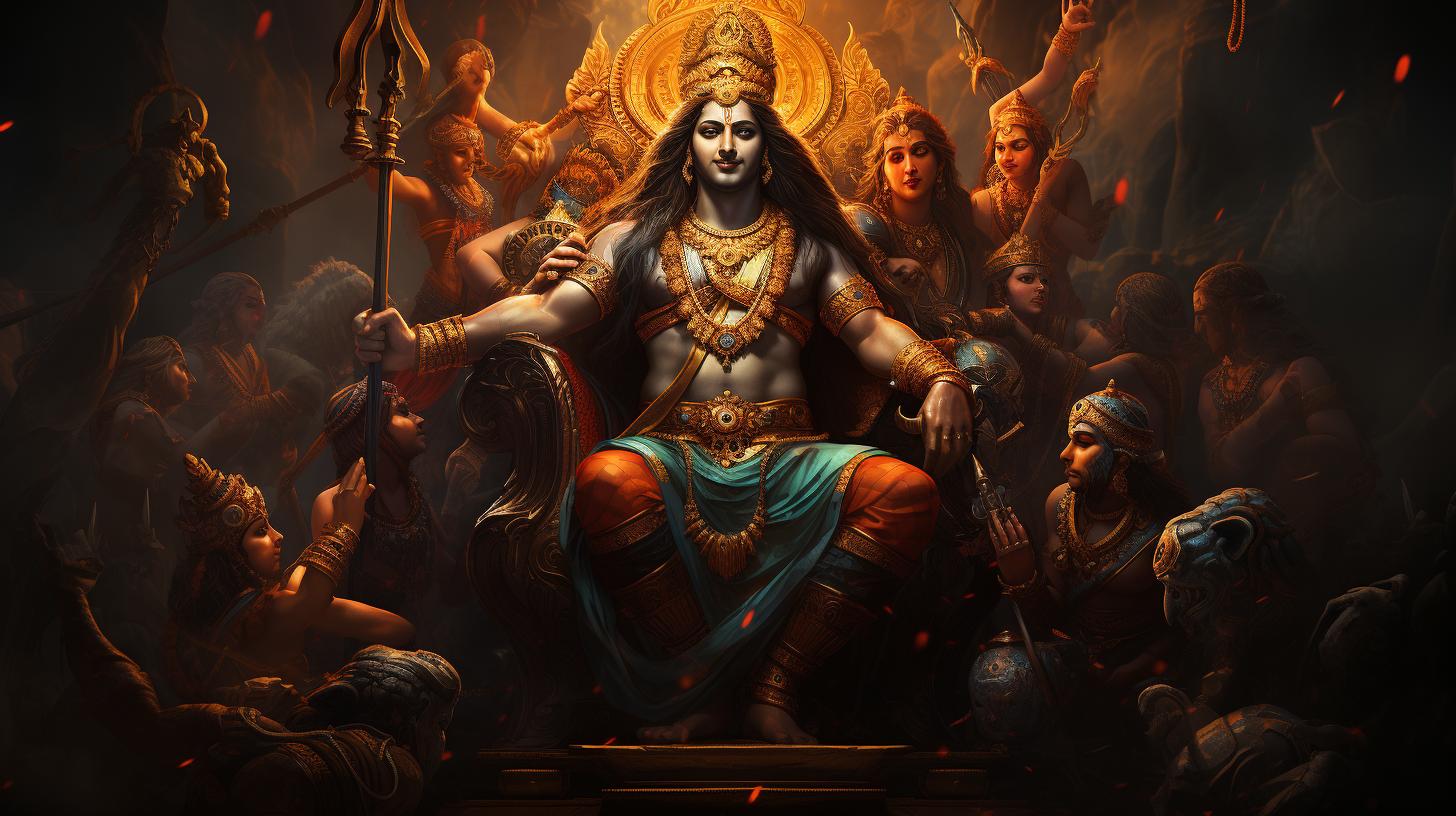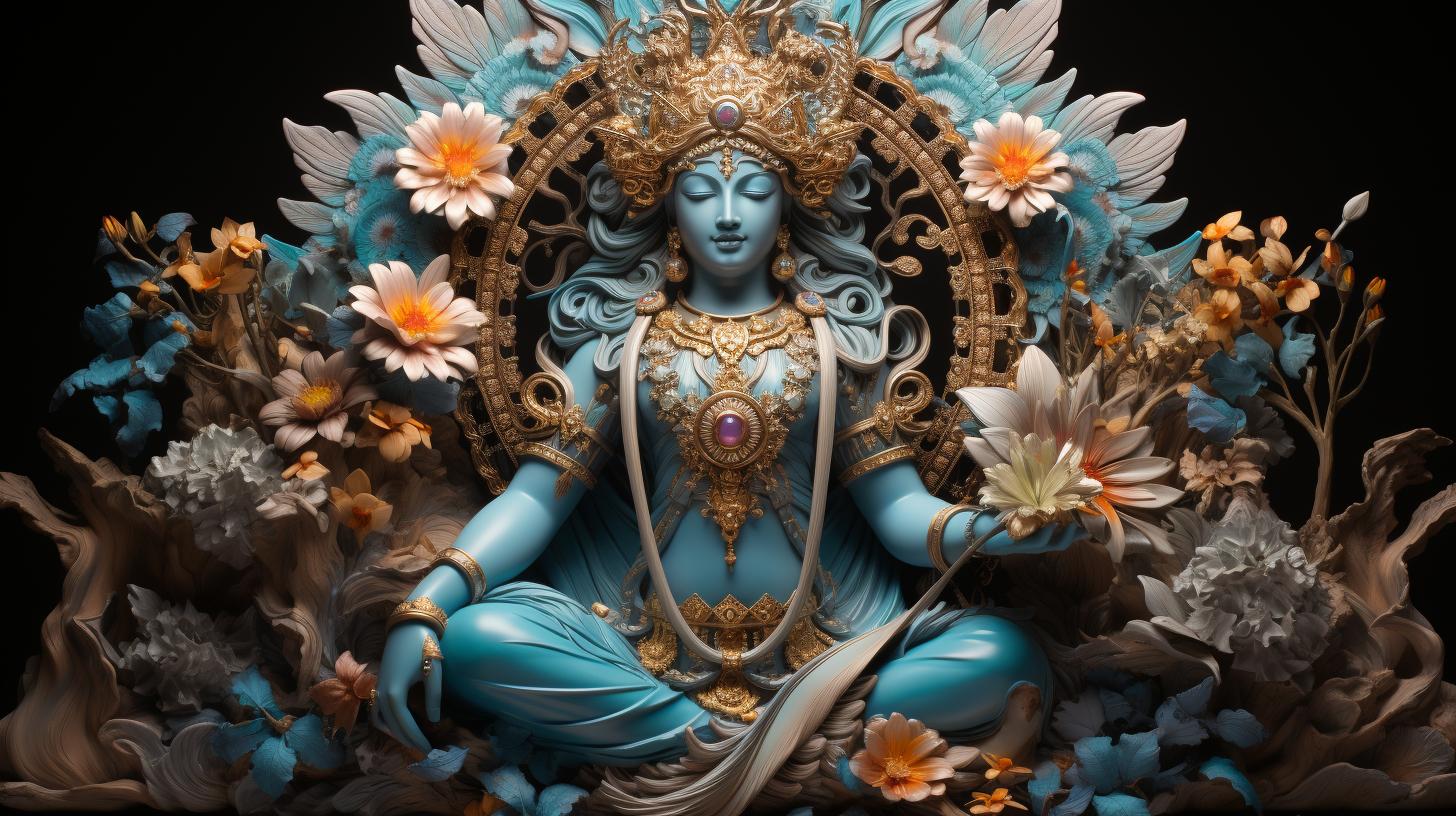What Was the Purpose of Vamana Avatar: Exploring the Divine Mission of Vishnu’s Fifth Incarnation
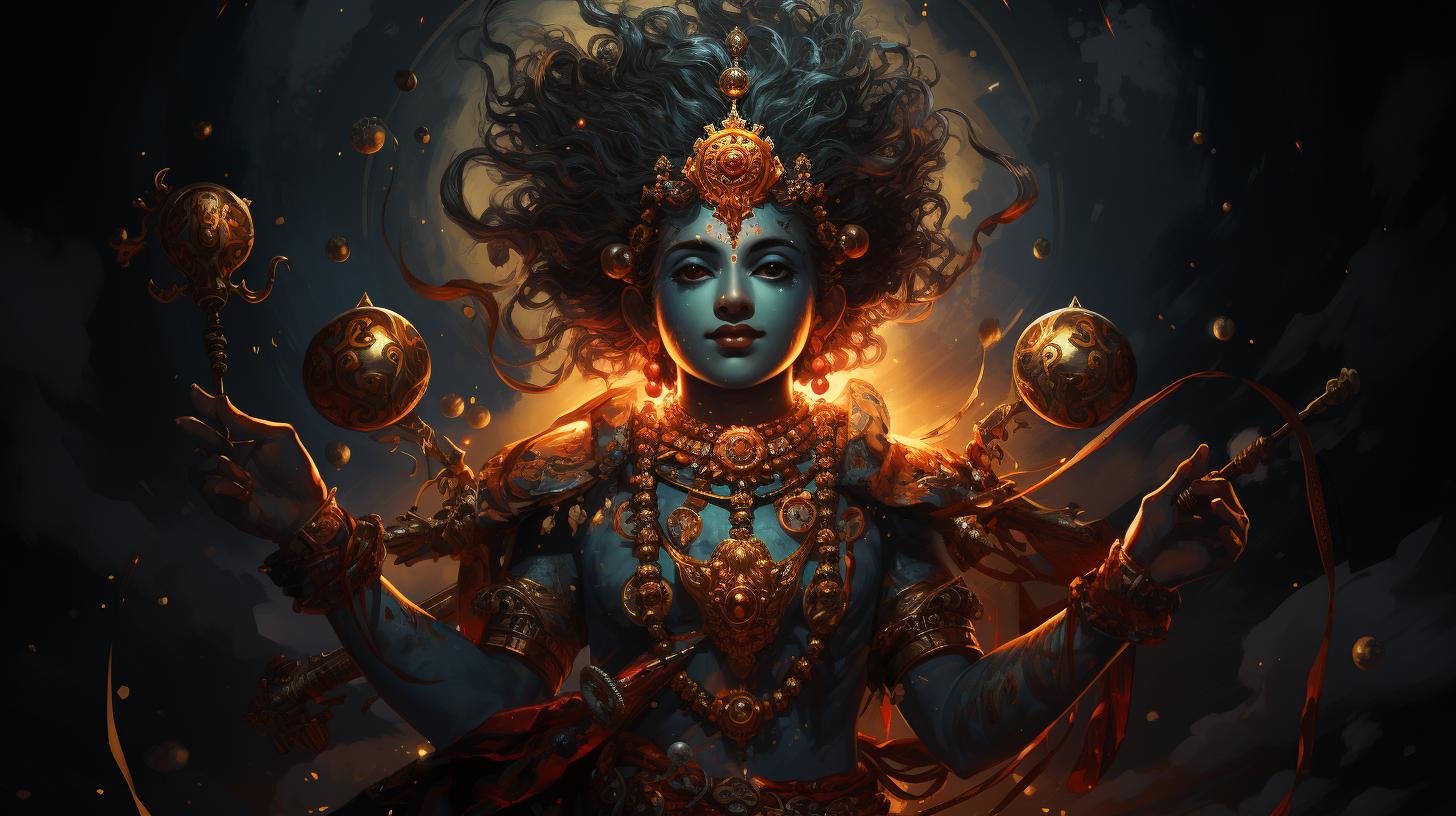
The purpose of Vamana avatar was to protect the devas, who were left homeless under Bali’s supreme rule. Vamana, disguised as a charming brahmachari child, sought gifts from Bali instead of resorting to war.
After Aditi, the mother of the devas, followed the advice of Kashyapa and propitiated Vishnu, he promised to be born as her son. Vamana’s birth on an auspicious day led to his initiation by the rishis and celestials.
He then confronted Bali at his sacrificial hall, where he was warmly welcomed and offered gifts. With just three steps of land requested, Vamana revealed his true form and covered the entire universe, banishing Bali to the underworld.
The Origin of Vamana Avatar
The Vamana avatar of the Hindu god Vishnu originated from the dire circumstances brought about by the devastating rule of Bali, the king of the three worlds.
The Devastating Rule of Bali
Under Bali’s supreme reign, the devas, celestial beings, found themselves without a home.
Bali’s power and dominance left them displaced and helpless.
Aditi’s Desperation and Kashyapa’s Advice
Aditi, the mother of the devas, was tormented by the plight of her children. In desperate search of a solution, she sought the counsel of Kashyapa, a revered sage. Kashyapa advised her to observe the sacred votive rite of Payovrata for twelve days to propitiate Vishnu.
Vishnu’s Promise to be Born as Vamana
In response to Aditi’s sincere devotion, Vishnu made a divine promise to be born as Vamana, her son.
This act of compassion and sacrifice aimed to safeguard the devas from Bali’s oppression and restore balance in the three worlds.
- The Devastating Rule of Bali
- Aditi’s Desperation and Kashyapa’s Advice
- Vishnu’s Promise to be Born as Vamana
Vamana’s Birth and Initiation
The birth and initiation of Vamana, the fifth incarnation of the Hindu god Vishnu, mark the beginning of his divine mission.
Let’s explore the significant events surrounding this auspicious occasion.
The Auspicious Day of Confluence
Vamana entered the world on a momentous day, the confluence of Sravana and Dwadasi. This cosmic alignment held profound symbolism and set the stage for the unfolding of Vamana’s purpose.
The Blessings of the Rishis and Celestials
Upon his birth, Vamana was blessed by the revered rishis and celestial beings.
They recognized the divine nature of this extraordinary child and bestowed their blessings upon him. These blessings empowered Vamana to fulfill his destined mission.
Vamana’s birth and initiation marked the commencement of his divine journey, as he embarked upon his task to protect the devas and restore balance in the universe.
Vamana’s Encounter with Bali
The presence of Vamana, the fifth avatar of Lord Vishnu, at Bali’s sacrificial hall was met with immense joy. Bali, who welcomed the young brahmachari child with great enthusiasm, recognized the divine aura surrounding Vamana.
It was a momentous occasion as the king offered various generous offerings to the avatar, displaying his reverence and devotion.
Joyful Reception at Bali’s Sacrificial Hall
Bali, along with his courtiers and officials, eagerly received Vamana at the grand sacrificial hall. The atmosphere was filled with anticipation and excitement, as they recognized the significance of the divine presence among them.
The devotion and respect shown towards Vamana were palpable, creating an aura of joy and reverence across the hall.
Bali’s Generous Offerings
As a mark of his respect and devotion, Bali presented Vamana with a multitude of generous offerings. He showered the divine child with precious jewels, sacred garments, and various valuable possessions.
Bali’s offerings symbolized his willingness to surrender his wealth and power to appease the divine forces represented by Vamana.
Vamana’s Request for Three Steps of Land
In a humble manner, Vamana approached Bali and made a seemingly simple request for only three steps of land. His unassuming demeanor belied the immense power and significance that lay behind his request.
Vamana’s demand was not for material wealth or land but rather a test of Bali’s generosity and understanding of the ephemeral nature of worldly possessions.
Vamana Unleashes His True Form
In a stunning display of divine power, Vamana suddenly revealed his true colossal form. With his first step, he covered the entire Earth, and with the second step, he encompassed the entire cosmos.
This awe-inspiring act showcased Vamana’s absolute supremacy and dominance over all realms. As Vamana prepared to take his third step, Bali realized the magnitude of the avatar’s true form and accepted his fate.
Thus, Vamana’s encounter with Bali at the sacrificial hall resulted in a drastic transformation of Bali’s fate and showcased the divine purpose behind Vamana’s incarnation.
The Consequences of Vamana’s Actions
Vamana Covers the Entire Universe in Two Steps
After Bali wholeheartedly accepted Vamana’s request for three steps of land, Vamana revealed his true form, expanding his size to immense proportions. With his first step, he covered the entire Earth, and with his second step, he encompassed the heavens.
The devas watched in awe as Vamana’s divine presence filled the universe, demonstrating his supreme power over all realms. This act solidified Vamana as the protector of the devas and reestablished their rightful place in the cosmic order.
Bali’s Banishment to the Underworld
As Vamana completed his two steps, there was no more space left for Bali to stand upon. With humility and reverence, Bali recognized Vamana’s divine nature and bowed down to him.
In this crucial moment, Vamana sentenced Bali to the underworld, where he would rule with justice and righteousness. Although banished, Bali accepted his fate gracefully, understanding the greater purpose of Vamana’s actions.
This decisive act marked the restoration of balance and order in the three worlds, ensuring the well-being of the devas and the preservation of dharma.
- The immense size of Vamana’s steps emphasized his incomparable power.
- The devas witnessed the restoration of cosmic balance through Vamana’s actions.
- Bali’s banishment to the underworld exemplified the consequences of defying divine order.
By covering the entire universe and banishing Bali, Vamana fulfilled his purpose: to protect the devas and restore harmony.
His actions showcased the might and benevolence of the divine avatar, affirming his timeless significance in Hindu mythology.
Note: The information provided is based on the religious beliefs and stories associated with Vamana avatar and may vary in interpretation among different sources.
Other Names and Representations of Vamana
Trivikrama, Urukrama, Upendra, Dadhivamana, and Balibandhana
The Vamana avatar of Vishnu is known by various names and titles that highlight different aspects of his divine nature. One of the most commonly used names for Vamana is Trivikrama, which means “the one who takes three steps.”
This name emphasizes Vamana’s pivotal action of covering the entire universe in just three steps. Another popular name for Vamana is Urukrama, which translates to “the one with mighty strides.” It signifies his extraordinary power and ability to span vast distances.
In addition to Trivikrama and Urukrama, Vamana is also referred to as Upendra, which means “the younger brother of Indra.” This name highlights Vamana’s connection to Indra, the king of gods.
Dadhivamana is another title associated with Vamana, meaning “the one who drinks milk.” It symbolizes his innocent and humble nature as a child avatar of Vishnu.
Furthermore, Vamana is also known as Balibandhana, which translates to “the conqueror of Bali.” This name reflects his role in subduing Bali and sending him into the underworld. It signifies Vamana’s power to enforce justice and bring balance to the cosmos.
Varying Depictions of the Avatar
The representations of Vamana avatar in visual art and sculptures vary in different contexts and artistic traditions. Some depict Vamana as a colossal form, towering over the universe, symbolizing his ultimate power and divine presence.
In these representations, he is depicted with multiple arms and intricately detailed features to convey his grandeur.
On the other hand, Vamana is also depicted as an enchanting dwarf-like figure, dressed in simple attire and adorned with a deer skin and a topknot. This portrayal emphasizes his disguise as a brahmachari child and his unassuming appearance.
It highlights the irony of how a seemingly insignificant form outwitted the mighty Bali and restored order in the cosmos.
It is fascinating to observe the diverse representations of Vamana, which reflect the multifaceted aspects of this divine avatar and the creative interpretations of artists throughout history.
.











